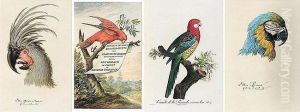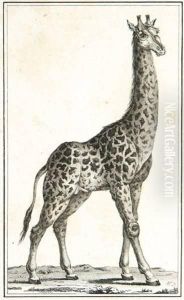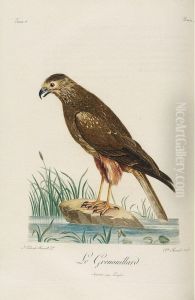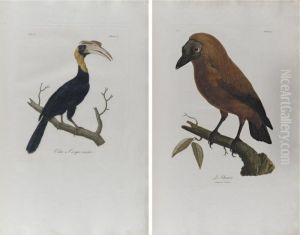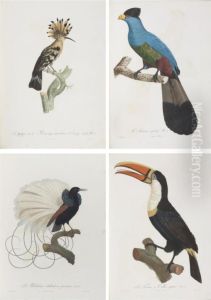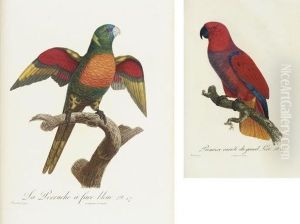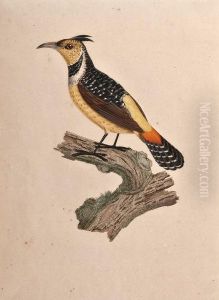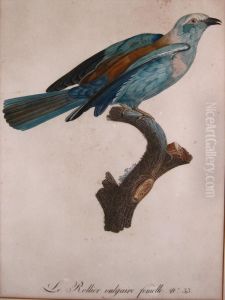Francois Levaillant Paintings
François Levaillant, born on August 6, 1753, in Paramaribo, Suriname, was not an artist in the traditional sense of painters or sculptors, but he made significant contributions to the art of natural history through his vivid descriptions and illustrations of birds. His work as an explorer, naturalist, and author during the late 18th and early 19th centuries left a lasting impact on ornithology, the branch of zoology dealing with birds. Levaillant was one of the first systematic users of color plates for scientific study, bringing to life the exotic avian species he encountered during his travels in Africa.
Levaillant's journey into the world of natural history was influenced by his upbringing in a French family settled in the Dutch colony of Suriname, where his father served as a wealthy plantation owner. This upbringing in a biodiverse region ignited Levaillant's passion for nature from a young age. In 1781, he embarked on his first expedition to Africa, which would become the foundation of his fame. Over several years, Levaillant explored vast areas of the continent, including regions in what is now South Africa, documenting wildlife and collecting specimens with a focus on birds. His expeditions were noted for their challenges and the rigorous detail with which he observed and recorded the natural environment.
Levaillant's major contributions to ornithology are encapsulated in his seminal works, among which 'Histoire Naturelle des Oiseaux d'Afrique' (Natural History of the Birds of Africa) published between 1796 and 1808, and 'Histoire Naturelle des Perroquets' (Natural History of Parrots) published between 1801 and 1805, stand out. These works were remarkable for their detailed observations, descriptions, and, most notably, the accompanying illustrations. Levaillant employed several talented artists to produce the plates, with Jacques Barraband being one of the most famous for his work on the parrot illustrations. The accuracy and beauty of these plates set new standards in ornithological illustration and contributed significantly to the field's development.
Levaillant's methodologies and observations challenged many of the established notions of the time and contributed to a more scientific and empirical approach to natural history. However, his work was not without controversy; he often criticized the Linnaean system of classification, preferring instead to classify birds based on their behavior and anatomy rather than solely on their morphology. Despite the debates his views ignited, his detailed field observations provided invaluable data for future generations of ornithologists.
François Levaillant died on December 22, 1824, in France. His legacy is not just in the volumes of his beautifully illustrated works, but also in the way he transformed the study and presentation of natural history. Through his pioneering efforts in the use of color plates and his detailed empirical research, Levaillant significantly advanced the field of ornithology and left an indelible mark on the scientific and artistic representation of birds.
